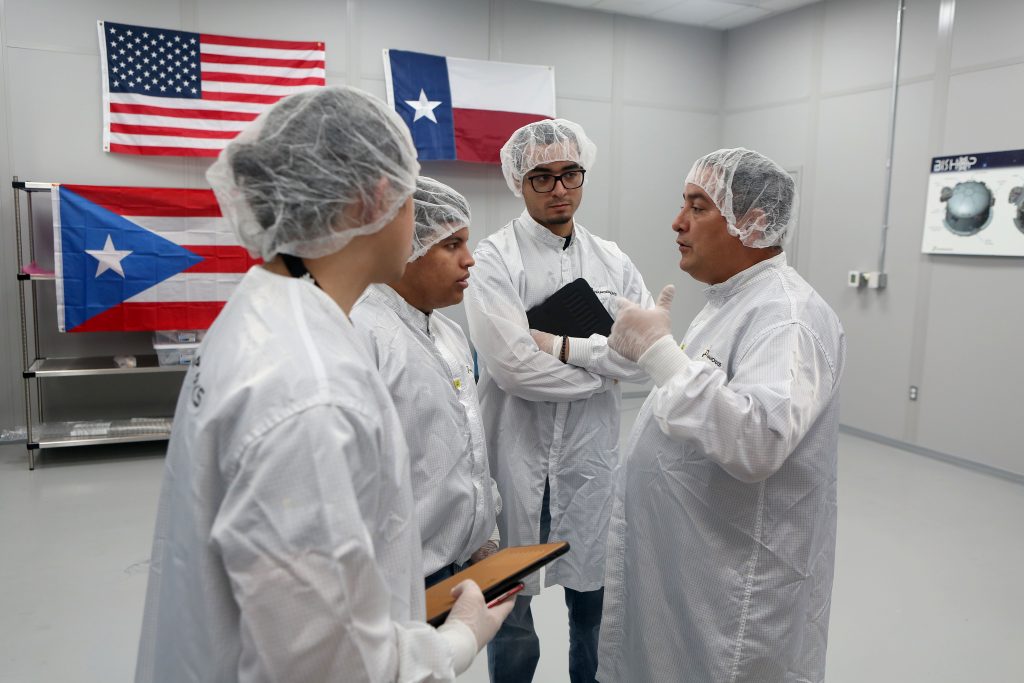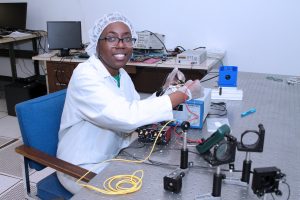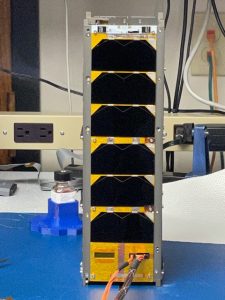
Leerlo en español aquí
NASA is preparing to launch three small, university-built research satellites aboard SpaceX’s 23rd Commercial Resupply Services mission to the International Space Station. This mission, carrying more than 4,800 pounds of cargo, will lift off from NASA’s Kennedy Space Center in Florida Saturday Aug. 28 at 3:37 a.m. EDT.
The small satellites, or CubeSats – built by the Inter-American University of Puerto Rico, University of Illinois Urbana-Champaign, and the University of Massachusetts Lowell – comprise NASA’s 37th Educational Launch of Nanosatellites (ELaNa) mission. Each CubeSat measures approximately four inches by four inches by 12 inches and will carry out unique tasks once deployed into low-Earth orbit.
Puerto Rico CubeSat NanoRocks-2 (PR-CuNaR2) is making history as the first CubeSat from Puerto Rico selected for launch by NASA. The small satellite contains millimeter-sized particles that will be mechanically shaken to induce collisions among the particles. The team hopes that results of the collisions might answer questions about how mass, density, composition of particles, and collision velocities contribute to the formation of protoplanetary disks – disks of gas and dust swirling around stars – and planetary ring systems, such as Saturn’s.
The CubeSat was designed and developed by about 25 students from the School of Engineering at the Bayamón campus of the Inter-American University of Puerto Rico, along with their professor, and principal investigator, Dr. Amilcar Rincón Charris.

Science Program Around Communication Engineering with High Achieving Undergraduate Cadres (SPACE HAUC) is an undergraduate student mission from the University of Massachusetts in Lowell, Massachusetts. SPACE HAUC will demonstrate a student-developed communication system that can quickly transfer large amounts of data. Many CubeSats transfer large data files to ground controllers at 2 to 5 megabits per second. SPACE HAUC aims to increase that speed to about 50 megabits per second using an x-band phased array antenna.
This CubeSat was designed and built over five years and by more than 100 students from the Kennedy College of Sciences and the Francis College of Engineering. Dr. Supriya Chakrabarti, physics professor and director of the Lowell Center for Space Science and Technology, is the principal investigator for this CubeSat mission.

Cool Annealing Payload Satellite (CAPSat) was developed across several departments at the University of Illinois Urbana-Champaign in cooperation with the University of Waterloo in Ontario, Canada. CAPSat will test technology that could enable quantum links in space, which are important for global quantum networks, sensors, and quantum-enhanced telescopes. The demonstration will use a laser to repair single-photon detectors that sense quantum signals.
Over time, photon detectors can become noisy in space due to radiation-induced defects. The laser onboard CAPSat will heat the detector, exciting the atoms in its structure. Once the laser is turned off, the atoms anneal, or settle back into an ordered state, repairing the damage and restoring the detector. The principal investigator, Paul Kwiat, is a professor in the University of Illinois Physics Department.
NASA’s CubeSat Launch Initiative (CSLI) selected the CubeSats, which were assigned to the ELaNa 37 mission by NASA’s Launch Services Program (LSP) based at the Kennedy Space Center in Florida. LSP manages the ELaNa manifest. CSLI provides launch opportunities for small satellite payloads built by universities, high schools, NASA Centers, and non-profit organizations.
To date, NASA has selected 202 CubeSat missions, 119 of which have been launched into space, with 59 more missions scheduled for launch within the next 12 months. The selected CubeSats represent participants from 42 states, the District of Columbia, Puerto Rico, and 102 unique organizations. CSLI recently released its Announcement of Partnership Opportunity for 2021. Applicants can submit CubeSat proposals until Nov. 19, 2021.
Stay connected with these CubeSat missions on social media by following NASA’s Launch Services Program on Facebook and Twitter.
